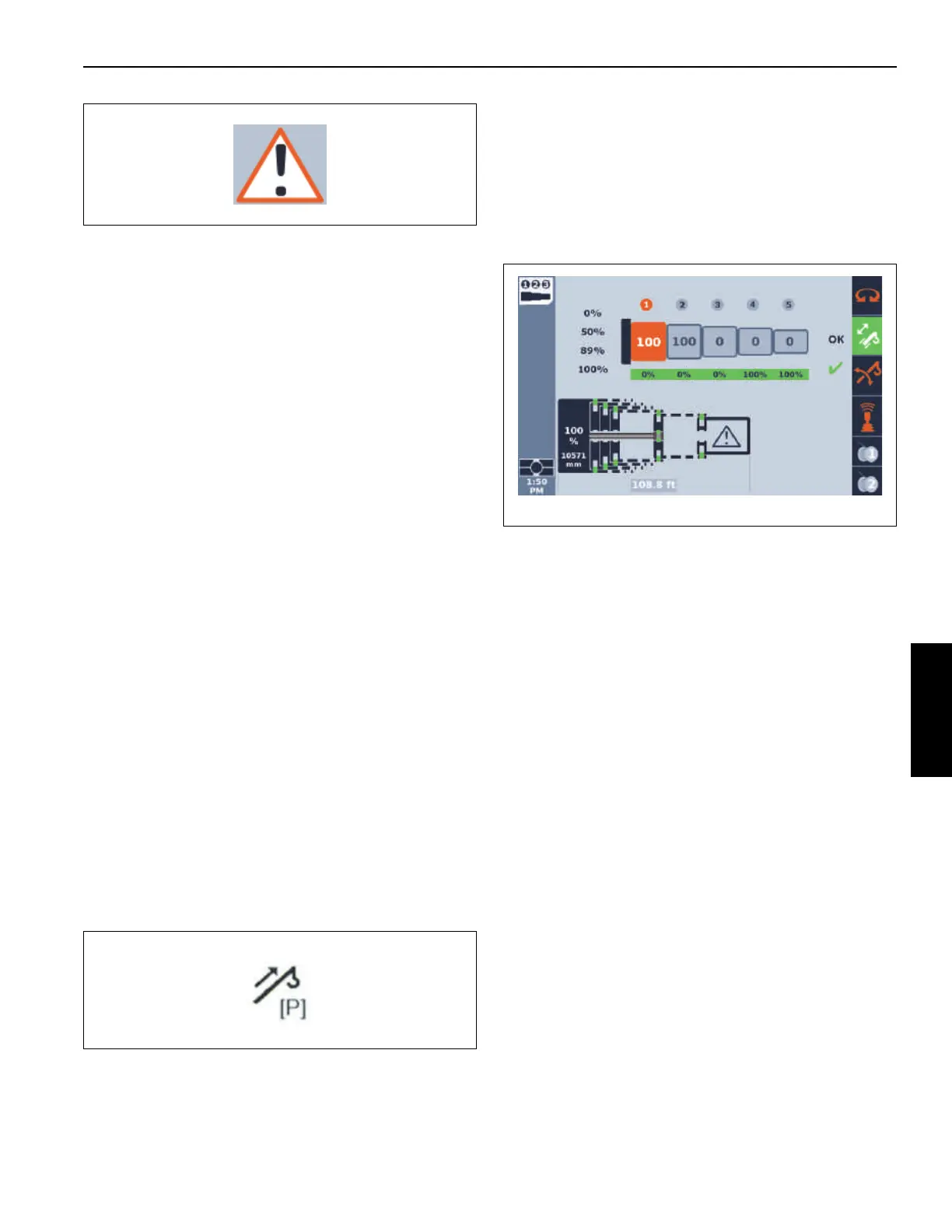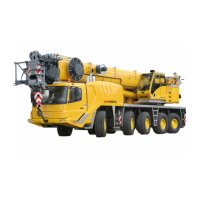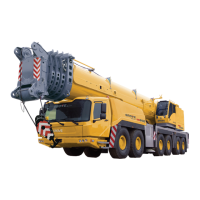Grove Published 7-23-2020, Control # 668-02 4-45
GRT9165 OPERATOR MANUAL OPERATING PROCEDURES
For the pinned boom control (such as in Semi-auto Mode), a
fault may be noted that is momentary. For instance, there is a
calculation of the difference between the calculated boom
length (based on the calculated boom section positions in
the control system) and the measured boom length (from the
boom outer cable reel sensor). If this difference is too large,
there is a fault condition. However, if the cable on the outer
cable reel sensor is just moved momentarily by something
near the boom, the cable may suddenly move and then
return to the proper tension. In this case, the fault condition
can appear momentarily. The icon in Figure 4-43 will appear,
and this fault code could be viewed on the operating display,
but it does not cause the telescoping function to shut-down,
and the fault code can be cleared.
For the proximity switches that sense the position of the
telescoping cylinder components and pinning mechanism,
similar momentary conditions may appear. There may also
be fault codes that appear when automated motions take
longer than expected, but the control system automatically
recovers from the condition.
For these momentary and warning conditions, the
telescoping function will continue to be available. If the left
and/or right arrows appear, then the boom can be moved in
the directions indicated by the arrows. The momentary or
warning conditions might also be helpful in diagnosing faults
that eventually cause the telescoping function to shut-down
(refer to the section in the document 'Semi-auto Mode
telescoping function shut-down'.
There are sensors in the telescoping cylinder that detect
elevated pressure conditions for extending the boom
(particularly for telescoping with significant hook loads). If the
pressure is beyond a threshold (depending on the distance
the telescoping cylinder has been extended), then the
extend motion is slowed down. If the pressure approaches
another threshold, then the extend motion is stopped. When
these conditions are apparent, the icon shown in Figure 4-44
will be shown in the Alerts Area (Figure 4-75) of the ODM.
Semi-auto Mode Telescoping Function
Shut-down
If the control system detects a fault that is not momentary
and not a warning indication, then the telescoping function
will be shut-down. In this case, the error icon (as seen in
Figure 4-45) will appear in the graphical schematic for the
boom (instead of the dots or the direction arrows described
previously).
Typically shut-down condition indicates a failure in the
components of the control system (such as sensors or
modules or communications). If the only indication of faults is
for the telescoping function, then the following steps can be
used:
Cycle the power for the control system. When the power is
restored, the control system will attempt to repeat the same
procedure or automated motion that was interrupted by the
fault condition. If the fault condition was not permanent, this
may correct the condition, and if the error icon does not
appear again, then the telescoping function can continue to
be used.
If cycling the power for the control system is not effective,
and there is a load on the hook while the control system is
attempting an automated action or motion (such as
unlocking the telescoping cylinder or a boom section), then
lower the load, if possible. Without the load on the hook,
cycle the power again to attempt the automated action or
motion.
If the telescoping function is still not operable, then the
manual telescoping mode can be attempted. In this mode, it
is possible to command slight telescoping cylinder motions
to assist with locking or unlocking.
If telescoping function is still not operable, then the fault can
be assumed to be in the control system components, and
control system diagnostic procedures should be utilized.
Semi-auto Mode Lost Boom Configuration
The Semi-auto Mode is expected to continuously monitor
and record the positions of the telescoping boom sections. If

